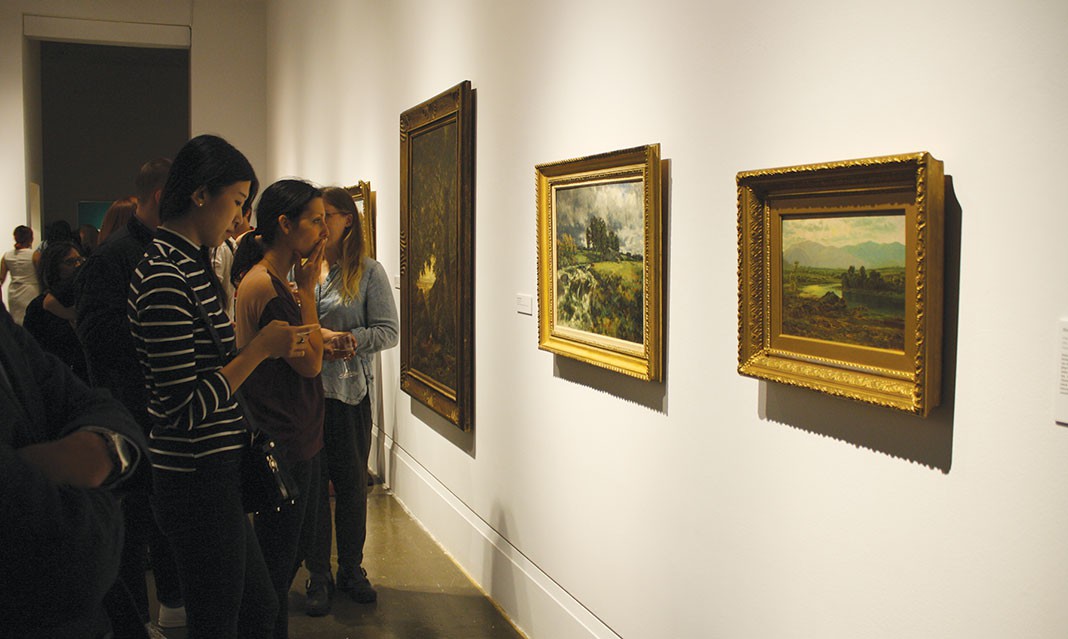The AGM was quiet when I walked in at 7:20 on a Thursday evening. But as I approached the exhibition hall, I could hear the murmur of voicesgrowing louder and louder as I approached, revealing a great turnout despite the show having only just opened its doors after the VIP reception.
“The things that orient me are the contours of the land,” a girl says as she walks through an unknown city. This poignant scene plays on the big screen that greets me when I enter. The screen shows films directed by Canadians of Aboriginal descent. The films ranged from two minutes to 46 minutes long and showcase Aboriginal people, their lifestyles, traditions, and cultures. I watch for 10 minutes and walk into the first exhibition, Beyond the Pines.
Beyond the Pines centres around the works of landscape painter Homer Watson, accompanied by eight contemporary Canadian artists. The AGM partnered with the Homer Watson House and Gallery to showcase his legacy. Watson, according to the press release, was known as “the man who first saw Canada as Canada”. Walking around the hallway displaying his work, I could see Canada as he saw it: an untamed wilderness, which is the truth both now and in the past. His Canada is vast, sombre, and uninhabited. The scenes he painted were not typically charming, yet they contained their own appeal: darkened skies, an abundance of trees, and muddy paths show a Canada before industrialization. The land before the people. A lost, lonely, yet lovely Canada.
My favourite of the contemporary artists was definitely Jennifer Carvalho. Her painting Unexpected Connections immediately grabbed my attention. It was a very simple work, just the tops of pine trees and the night sky peering out between them. Despite its mundane subject, I felt like something was about to happen. Her following work, The Ruin, shows a similar scene of dark, murky waters and the silhouettes of trees. This piece, however, just didn’t work for me. I was interested to discover that her inspiration was from cinematography and the Anthropocene, the period in time when humans began to have an impact on ecosystems and geography, but The Ruin contrasted starkly against Watson’s untouched landscapes.
Across from the refreshment stand, another small crowd gathers. They stand in admiration of Mary Grisey’s installation, Sung from the Mouth of Cumae. The story behind the work is interesting—Cumae was an ancient Greek city located in Italy, near Naples. In some stories, the city contained the entrance to the underworld. But it is best known for the Cumaen Sibyl, a priestess who sung prophecies from the mouth of a cave, hence the title of the exhibit. At the centre of the room is an abstract mass of clay. There is a hole, like a mouthpiece, from which strange sounds emit. Surrounding the clay object are pieces of fabric of various materials and textures that hang from the ceiling. Even without knowing the backstory, the installation invokes an eerie, heavy atmosphere. I stand there and the pieces of cloth seem to stand with me, listening, suspended in midair.
As I leave the AGM, the murmur of discussion rises. The AGM’s mandate “to bring art to the community and the community to art” has certainly been demonstrated tonight. The three exhibitions serve as an ode to Canada and Canadians have shown up to discover and appreciate it.



